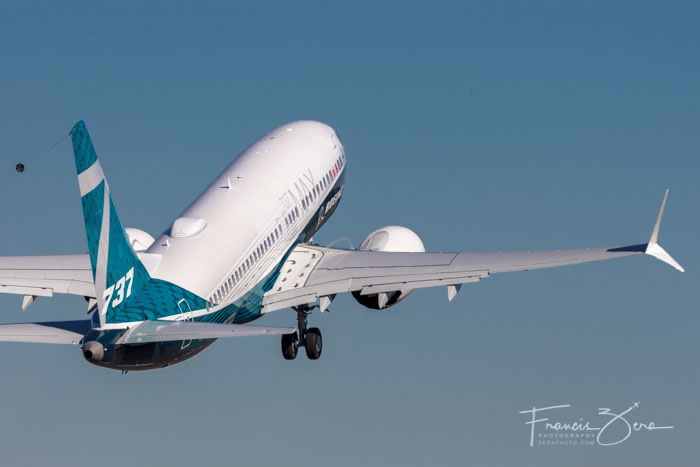
The new 737 MAX 7 departs from Renton on its first flight
Boeing’s newest offering, the 737 MAX 7, took to the skies on March 16, an uncharacteristically sunny, blue-sky day for a Boeing first flight most all of them in recent memory have taken place on truly miserable days.
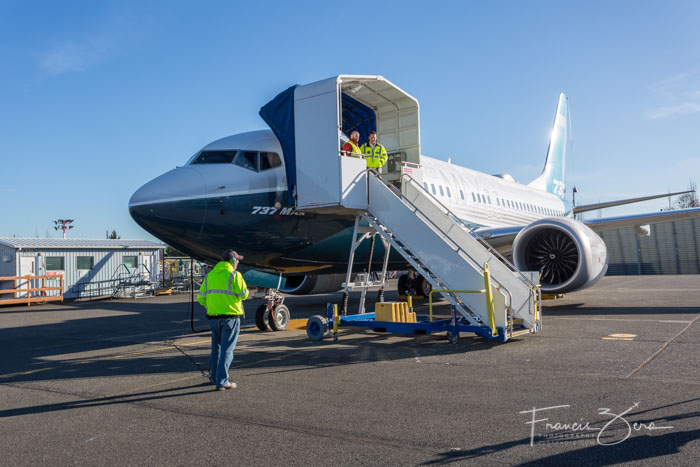
Crews prepare the jet for departure
The new jet is the smallest of the MAX family, has a seating capacity of 138-172, and a range of 3,850 nautical miles, which is the longest reach of any of the MAX models. Southwest Airlines, with its famously all-Boeing 737 fleet, is listed as the launch customer, with a scheduled entry in to service of 2019.
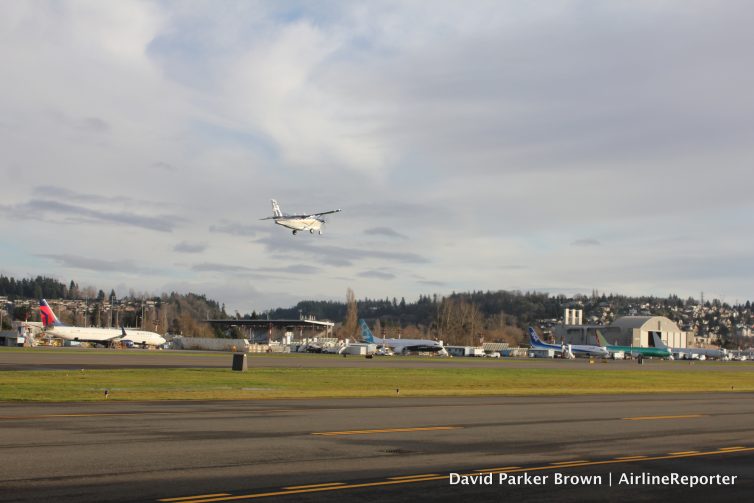
A Cessna completes a touch and go at RNT
Runt. That might be what you think of when you see the IATA code — RNT — of Renton Municipal Airport (aka Clayton Scott Field). Yes, it might be small compared to many other airports, but it has a huge impact on the global aviation market.
The airports in the greater Seattle area can be confusing. I find that many are aware that all Boeing commercial aircraft are made in the Seattle area (and Charleston), but it is not so clear how the airports play such different roles. RNT’s big claim to fame is that every Boeing 737 is built at the Boeing facility next door, and every 737 has made its first flight from there (even the P-8 Poseidon). If you were following the first flight of the Boeing 737 MAX, that was RNT.
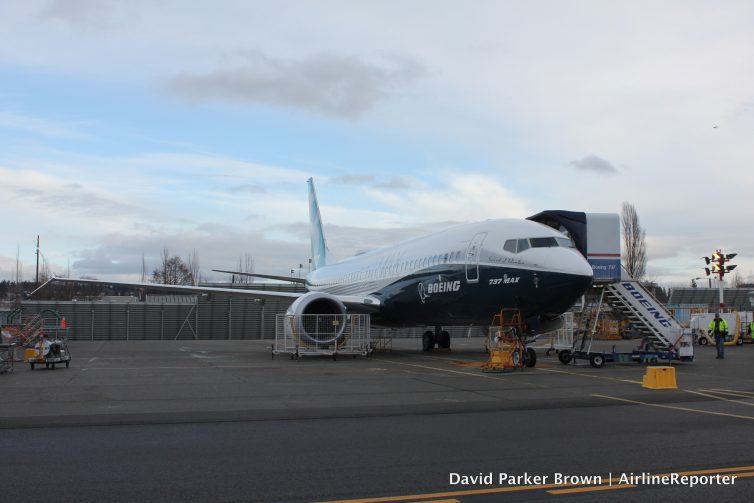
The first 737MAX sits on the flight line in Renton
I recently had the opportunity to meet up with Jonathan Wilson, RNT’s Airport Manager, to learn more about their operations and future. Not everyone that I meet in aviation is an AvGeek, but Jonathan definitely is one. We ended up talking airlines, airports, and of course RNT. Then we loaded up in one of their sweet trucks and drove around the airport!
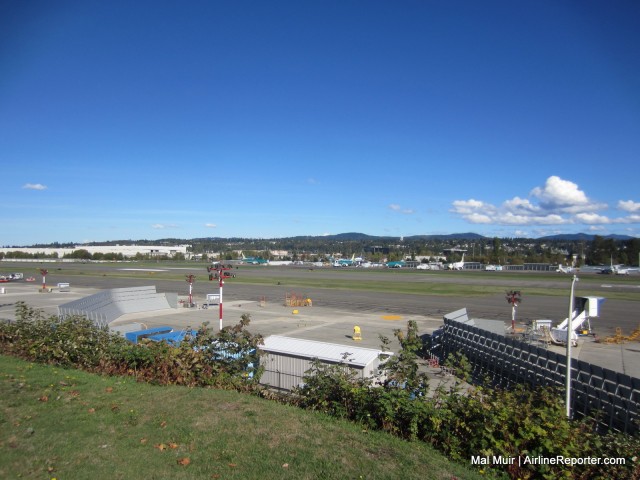
Renton Municipal Airport, home of the Boeing 737
In the past, we have featured plane spotting guides for Paine Field and also other airports like Anchorage or Tokyo Haneda. With numerous airports in the Seattle area, including SeaTac and Boeing Field, there is sometimes a forgotten, but quite important, airport for plane spotters which provides a continuous stream of aircraft to spot. I am speaking of Renton Municipal Airport, the home of Boeing’s narrow-body aircraft plant.
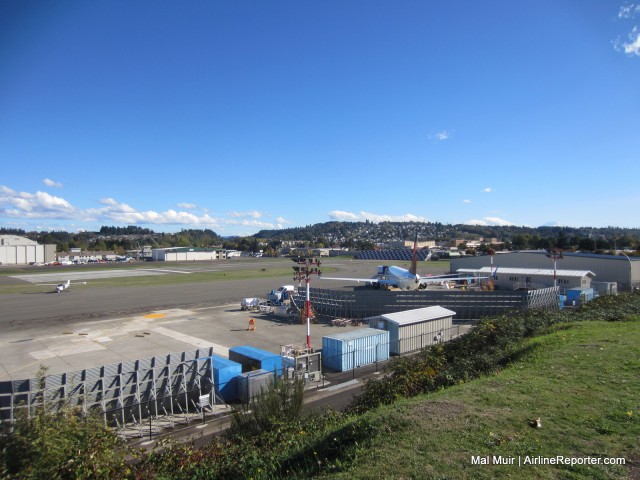
The southern threshold of Renton’s runway
The Renton Airport traces its history back to World War II. Originally built on reclaimed land from Lake Washington, the airport was built by the Department of Defense (DoD) to support Amphibious Aircraft being built by Boeing on Lake Washington. The PBB Sea Ranger project was cancelled after the prototype was built, so Boeing ended up using the facility to produce the B-29 Superfortress. By the end of the war, a total of 1,119 were built.
After the war, the City of Renton purchased the airport back from the DoD for $1 and the facility laid dormant for a few years. In 1948, the KC-97 Stratofreighter project brought the airport back to life and thus began a long and productive history of aircraft to flow out of the Boeing factory doors. The first Dash 80 aircraft, famous for the barrel roll over Lake Washington, rolled out in May 1954. Renton was the home of every single 707 built.
The 727 & 757 were all built there as well. However, Renton is famous these days for being the home of the 737, where production stands at a massive 42 aircraft per month.
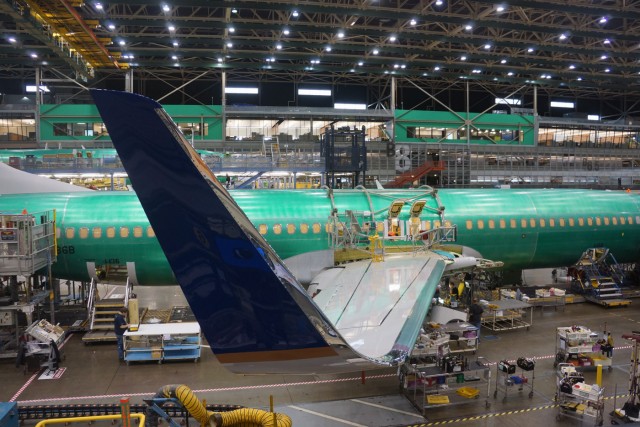
COPA Boeing 737 in the Renton Factory. Image by Chris Sloan.
This story was written by Chris Sloan and originally was published on Airchive.com. This is the next of a multi-part series talking about the Boeing 737 factory in Renton. Read the first part: A Historical Look at Boeing’s 737 Factory in Renton and second part: Inside Boeing’s 737 Renton Factory and the Successful Next Gen.
The Boeing 737 Goes Into ’œMAX’ Overdrive
The Boeing 737 NextGen order book continued to bulge, growing virtually unabated even through the deep worldwide economic slowdown / crisis of 2008-12. Ironically, this era of financial strife and sharply escalating fuel costs, as well as the growth of emerging markets, helped 737 and A320 sales go from strength to strength. Boeing however didn’t stand on it its laurels or did it?
Boeing claims with the introduction of its latest performance improvement package ’œPIP’, today’s NGs are 6-7 more efficient then when they were first introduced in the late 1990s. Boeing’s Tinseth points out that ’œThe (737) program has taken off with record sales. It’s simple. We make it better every time. We were first in its class with ETOPS 180, glass cockpits, Sky Interiors, and high bypass engines. We lower the operating costs through such new technologies as blended winglets, heads up display, carbon brakes, and more fuel-efficient engines. We enhance customer appeal with the new Sky Interior. This is an airplane that appeals to the heart of the market: emerging and developing economies and it is very successful with the LCC business model’. These new LCC airlines in emerging markets include Lion Air, Air Asia, and Gol! An unintended benefit of the weak economy, particularly in the U.S., is the poor financial results led to an elderly, fuel-in-efficient, maintenance intensive fleet which created an advantage and some say a bubble for airframe manufacturers, particularly in this sweet smart of the market. ’œThe significant driver in the US is the demand to replace older and less efficient aircraft’, said Tinseth.






